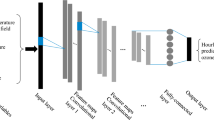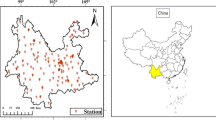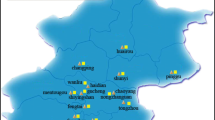Abstract
This article aims to realize the combined application of satellite remote sensing data and Lidar data fusion of atmospheric ozone in the ozone distribution prediction in western China. Firstly, the ozone remote sensing data and Lidar vertical monitoring data detected by ozone monitoring instruments are collected from various provinces in western China; the recurrent neural network (RNN) model based on the gated recurrent unit and the convolutional neural network (CNN) model based on time series are constructed and integrated to obtain the RNN–CNN model for ozone concentration prediction, and the prediction performance is compared with that of the RNN and CNN model. Satellite remote sensing data show that the total ozone concentration in western China has obvious spatial distribution characteristics, and can be elevated with the increase in latitude; the ozone concentration in the north is higher and the ozone concentration in the south is lower in different seasons in western China, and it in autumn and summer is lower than that in spring and winter generally. The hour-by-hour change of ozone concentration shows that the ozone concentration in different seasons reaches a trough around 9–10 o’clock, and reaches a peak around 16–17 o’clock. When the RNN–CNN model is applied to predict the hourly change of ozone concentration within a day, it can achieve the best root-mean-squared error (18.13), mean absolute error (11.64), and index of agreement (0.973). The monitoring results of Lidar data at a certain site are compared and analyzed, and the results show that the fitness is the best between the predicted value of ozone concentration obtained by the RNN–CNN model and the actually measured value. This research provides the possibility for the intelligent prediction of atmospheric ozone concentration distribution and has reliable theoretical value and practical significance.











Similar content being viewed by others
References
Alkaim AF, Al-Janabi S (2019) Multi objectives optimization to gas flaring reduction from oil production. Big Data Netw Technol 81:117–139
Cramer ES, Briggs MS, Liu N et al (2017) The impact on the ozone layer from NOx produced by terrestrial gamma ray flashes. Geophys Res Lett 44(10):5240–5245
Zerefos C, Kapsomenakis J, Eleftheratos K et al (2018) Representativeness of single lidar stations for zonally averaged ozone profiles, their trends and attribution to proxies. Atmos Chem Phys 18(9):6427–6440
Ancellet G, Ravetta F, Pelon J et al (2020) Ozone lidar observations in the city of paris: seasonal variability and role of the nocturnal low level jet. Eur Phys J Conf 237(24):03022
De Young R, Carrion W, Ganoe R et al (2017) Langley mobile ozone lidar: ozone and aerosol atmospheric profiling for air quality research. Appl Opt 56(3):721–730
Wang X, Li G, Liu Y et al (2017) Two-level block matching pursuit for polarimetric through-wall radar imaging. IEEE Trans Geosci Remote Sens 56(3):1533–1545
Pu W, Li W, Wu J et al (2017) An azimuth-variant autofocus scheme of bistatic forward-looking synthetic aperture radar. IEEE Geosci Remote Sens Lett 14(5):689–693
Gade M, Wang W, Kemme L (2018) On the imaging of exposed intertidal flats by single-and dual-co-polarization synthetic aperture radar. Remote Sens Environ 205:315–328
Yonel B, Mason E, Yazıcı B (2017) Deep learning for passive synthetic aperture radar. IEEE J Sel Topics Signal Process 12(1):90–103
Arooran K, Leila P, Shuai L et al (2017) Ozone-triggered surface uptake and stress volatile emissions in nicotiana tabacum “wisconsin.” J Exp Bot 3:681–697
Al-Janabi S, Mohammad M, Al-Sultan A (2020) A new method for prediction of air pollution based on intelligent computation. Soft Comput 24(5):661–680
Igoe DP, Parisi AV, Amar A et al (2018) Atmospheric total ozone column evaluation with a smartphone image sensor. Int J Remote Sens 39(9–10):2766–2783
Qu YW, Wang TJ, Cai YF et al (2018) Influence of atmospheric particulate matter on ozone in Nanjing, China: observational study and mechanistic analysis. Adv Atmos Sci 35(11):1381–1395
Harrou F, Dairi A, Sun Y et al (2018) Detecting abnormal ozone measurements with a deep learning-based strategy. IEEE Sens J 18(7):7222–7232
Al-Janabi S, Alkaim AF, Adel Z (2020) An innovative synthesis of deep learning techniques (dcapsnet and dcom) for generation electrical renewable energy from wind energy. Soft Comput 24(14):10943–10962
Xu X, Li W, Ran Q et al (2017) Multisource remote sensing data classification based on convolutional neural network. IEEE Trans Geosci Remote Sens 56(2):937–949
Jeppesen JH, Jacobsen RH, Inceoglu F et al (2019) A cloud detection algorithm for satellite imagery based on deep learning. Remote Sens Environ 229:247–259
Liao W, Van Coillie F, Gao L et al (2018) Deep learning for fusion of APEX hyperspectral and full-waveform LiDAR remote sensing data for tree species mapping. IEEE Access 6:68716–68729
Li T, Shen H, Yuan Q et al (2017) Estimating ground-level pm2.5 by fusing satellite and station observations: a geo-intelligent deep learning approach. Geophys Res Lett 44:11985–11993, 11993A
Zhang Z, Zheng L, Weng J, Mao Y, Lu W, Xiao L (2018) A new varying-parameter recurrent neural-network for online solution of time-varying Sylvester equation. IEEE Trans Cybern 48(11):3135–3148
Cao XK, Liu YR, Wang JP, Liu CH, Duan QL (2020) Prediction of dissolved oxygen in pond culture water based on k-means clustering and gated recurrent unit neural network. Aquacult Eng 11:102122
Lee W, Kim M, Cho DH (2018) Deep power control: transmit power control scheme based on convolutional neural network. IEEE Commun Lett 22(6):1276–1279
Guo M, Li J, Xu J, Wang X, He H, Wu L (2017) Co2 emissions from the 2010 Russian wildfires using GOSAT data. Environ Pollut 226:60–68
Zhang W, Zou Y, Zheng XD, Wang N, Deng XJ (2020) Characteristics of the vertical distribution of tropospheric ozone in late autumn at Yanjing station in pearl river delta (PRD), China. Part I: observed event. Atmos Environ 244:117898
Author information
Authors and Affiliations
Corresponding author
Additional information
Publisher's Note
Springer Nature remains neutral with regard to jurisdictional claims in published maps and institutional affiliations.
Rights and permissions
About this article
Cite this article
Jiang, Y., Qiao, R., Zhu, Y. et al. Data fusion of atmospheric ozone remote sensing Lidar according to deep learning. J Supercomput 77, 6904–6919 (2021). https://doi.org/10.1007/s11227-020-03537-y
Accepted:
Published:
Issue Date:
DOI: https://doi.org/10.1007/s11227-020-03537-y




